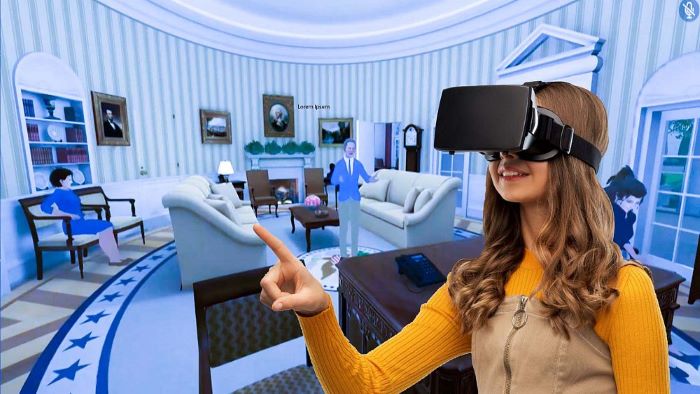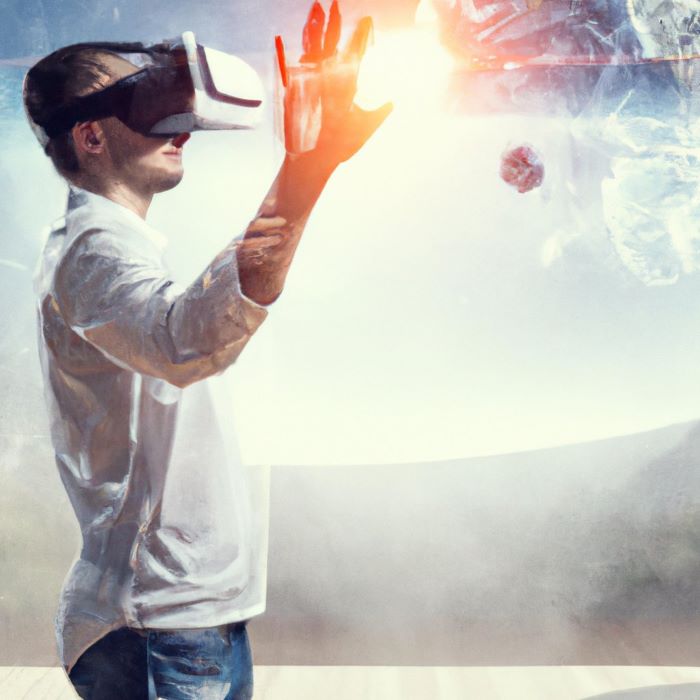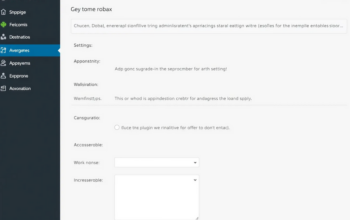The Complete Guide to Meta Classrooms and Virtual Reality Education
How Meta Classrooms Work
The Meta Classroom is a virtual classroom that provides an environment for learning. It is a place where students and teachers can communicate with each other, share information and interact with each other. The Meta Classroom is a place where the teacher can do their job without leaving the comfort of their home or office.
The Meta Classroom is not just for children to learn, it also benefits adults who want to learn new skills or refresh their knowledge on a certain topic. For example, people who are looking for work in the IT industry can enroll in an online course that teaches them how to code.
Meta Classrooms are Virtual platforms that enable teachers to create their own virtual classrooms. With Meta Classrooms, teachers can create a curriculum and then teach the course to students from all over the world. Meta Classrooms within the Metaverse, are of course A.I. driven, assisted and monitored. The use of AI in education is not so new as many people may think. In fact, it has been around for some time now, and it has proven to be very effective in various areas of education including language learning and teaching children with autism. Brunei University’s 100 Million Dollar “Social Virtual Reality” project for example, is meant to research how the virtual world can be more inclusive and accessible to disabled people and help them overcome problems they face in the physical world.
The researchers want to explore how the Metaverse can be used as a tool to level the playing field and give disabled people the same opportunities as everyone else. Virtual Mobility applications will be able to provide an easily-accessible alternative to regular activities that require a lot of mobility.
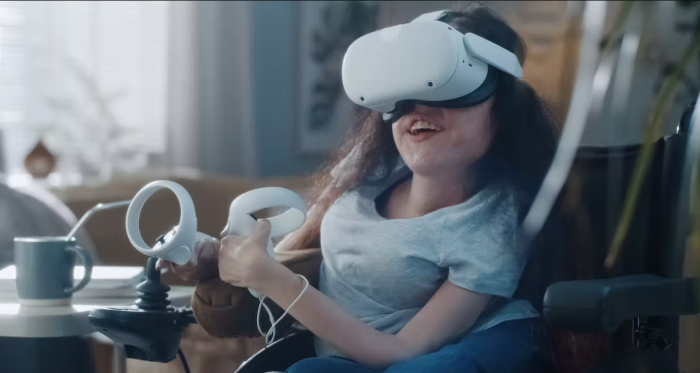
The Benefits of Going Virtual
VR provides a new way for us to experience the world and learn about different cultures.
- VR can be used in education to provide students with infinite scope and access without geographical or time limitations. They can visit any place and interact with people from all over the world.
- VR provides a new way for us to experience the world and learn about different cultures.
- VR enables Tutors to expand their power to convey their message, and empowers them with new ways of Teaching With Virtual Reality.
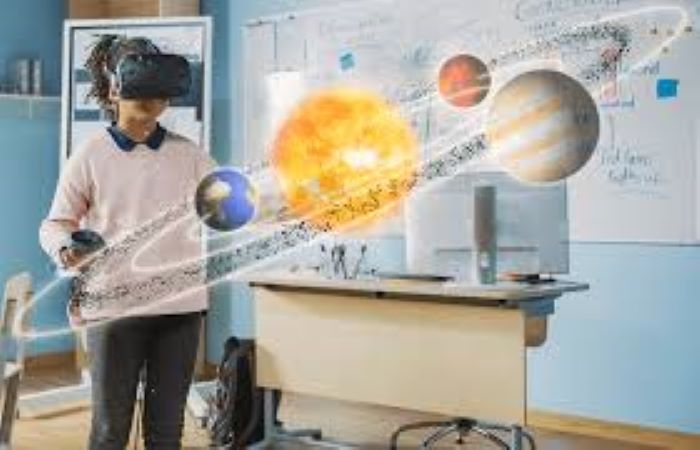
Going Virtual, of course means the ability to work from Home. Working at home has many benefits. It is not just the comfort of working in your pajamas and being able to take a nap during the day, but it is also the ability to work where you want with improved connectivity, but more personal freedom. No commute, no boss hovering over you while you work, and no office politics. In addition, there are many other benefits that come with working from home.
Teaching in a Meta Classroom vs Traditional Learning Methods.
Learning in traditional classroom is based on the teacher-centric teaching method which means teachers control how and when students learn. The methods are static and can’t be changed.
What Exactly is a Meta Classroom?
One example of a Meta Classroom in this current advent of the Metavers, and Web 3.0, is NextMeet
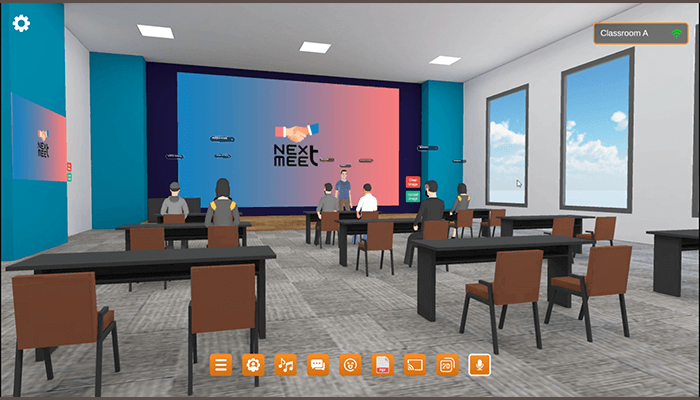
In the Meta Classroom, students take a more active role in their learning process. They get to choose the topics they want to learn about, subjects they want to explore more deeply, etc. They decide what kind of feedback they want; such as quizzes or peer-to-peer feedback for example. Teachers in this setting are facilitators that guide learners through various resources and possibilities. In a Meta Classroom setting, every choice is dynamic instead of static like traditional classrooms which allows for more customization. This is also part of how Web 3.0 also is making the internet as we have known it to now, an easily accessible patform for creating interactive tutorials, with Object Based Media Content Creation Apps, and HTML 5.
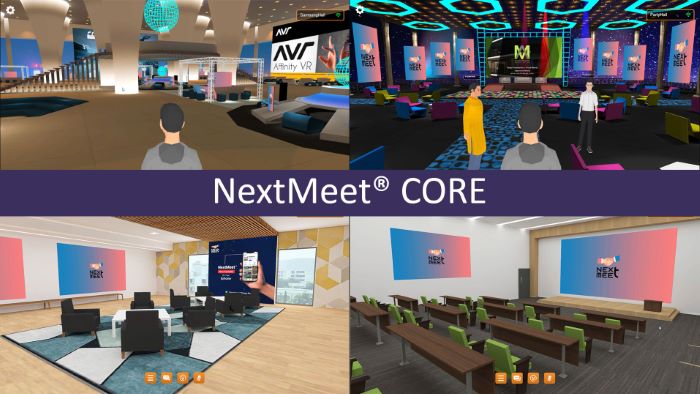
The future of education is no longer a debate. Across the globe, it has come to be a reality. With the rise of Artificial Intelligence and big data, there are exciting prospects for the transformation of teaching and learning across all levels of schooling.
So let us look at how E-learning and A.I. can work together to create personalized adaptive courses that deliver better outcomes for students; One of the ways to create immersive virtual classes and trainings is by using enhanced sensory perception through assistive software. Mobile devices can provide the right tools to simulate how a person would feel in a certain environment.
This kind of experience will lead to more interactive, engaging, and exciting learning sessions. Another way to create immersive virtual classes. is by using interactive object based media learning. In this scenario, the teacher will walk around with a tablet or smartphone, with the learners following behind him or her as they go on their journey together.Or the students could undergo a non linear interactive touchscreen examination or lesson, using Interactive Object Based Media Tools to expand the number of possible solutions to a question, to encompass context, and other subtleties of Human Thought.
Different Ways to Create Immersive Virtual Classes
O.B.M. HTML, Play Music Together (online Jams), Collaborative Strategic Tasks, Games, and Conundrums to solve using multiple student collaboration, to increase team effort and team mindset. Incentive Based Learning using the neurologicl reward system discovered by A.I. algorithms, is certainly to become an ever evolving feature of Virtual Learning. One of the best ways to make an experience immersive is with virtual reality. In order for students to be fully immersed in what they are learning, VR is a good option. However, not everyone owns a VR headset and some people don’t even like the idea of wearing one. Emerging Disruptive hardware and Software Technologies are however now making this issue solvable, through holograpic projection of Augmented Reality Interactive Content, making the need for headsets obsolete wherever projectors are installed, such as in city centers, smart buildings and shopping malls, and other commercial centers..
Augmented Reality (AR) is another option that can be used by taking advantage of mobile devices and apps. This type of immersive experience gives the user the ability to see digital images through their screens, which can be interacted with using their hands. An example would be turning a 3D map or chart into an AR model on your screen
The Metaverse. and Its Role in Virtual Education and Teaching
The Metaverse has its concept and architecture formed around encompassing XR (AR, MR and VR).Extended Reality (AR), and Virtual Reality (VR), are still in their early stages of development. It is believed by many Pundits, that they will play a significant role in education and teaching in the future.
Augmented reality, can be used to help students visualize complicated mathematical problems, or teach them difficult concepts in biology or chemistry for example.
VR can be used to improve the communication skills of students by enabling them to act out scenes such as speaking with a customer, delivering a speech or performing surgery.
The Metaverse features digital 3d assets, avatars and holographic projection as well as the ability to interact with other participants inside of this virtual world. The Metaverse may soon become an integral part of where our children study and learn, without ever leaving home.
The augmented reality can be used to help students visualize complicated mathematical problems or teach them difficult concepts in biology or chemistry. VR can be used to improve the communication skills of students by enabling them to act out scenes such as speaking with a customer, delivering a speech or performing surgery.
The Metaverse features digital 3d assets, avatars and holographic projection as well as the ability to interact with other participants inside of this virtual world. The Metaverse may soon become an integral part of where our children study and learn, without ever leaving home.
Nowadays, in the age of digital education, there are many technological tools that are used to teach and learn. However, the future will bring even more tools and innovations in order to improve the educational experience.
The development of artificial intelligence has introduced new ways for teaching and learning through the use of a virtual teacher or an intelligent guidance system. With these technological advancements in education, students will be able to learn anywhere at any time.
How to Implement a Meta Learning Platform into Your School Curriculum? This section will be about how to implement a meta learning platform into an educational environment, or for example, school curriculum.
Overview of the potential benefits of implementing Meta Learning into an education environment;
Meta Learning, is all about giving students a personalized learning experience through adaptive and interactive content. The goal is to address all different needs and interests while catering to every student’s strengths and weaknesses.
Meta is not Facebook’s Sole Propriety or Product, rather just an ecolution of the Internet itself. Metaverse Classrooms can provide a learning platform designed to alter the way in which learners interact with their surroundings. When coupled with augmented reality, Meta can make the world interactive and more visually stimulating, while also preventing learners from getting bored. This platform can help students by providing them with new and exciting ways to learn that they would not be able to experience otherwise.

- Metaverse encompasses among other things:
ITOT Intelligent Smart Internet of Things Devices, and Eventual Integration with Smart City Public Interfaces.
Augmented Reality Holograms
Holographic Projectors
Interaction between the real world and metaverse - Real World; The tangible world through which we navigate on a day to day basis
- Metaverse: – The Interface through which we interact with, when connected to its Matrix.
- Extended Reality – VR, AR, and MR (Mixed Reality Portal), superimposed on the Real World, using Emerging Technologies such as Holographic Lidar Projectors, and the growing ability of A.I. to communicate, inform, learn from, interact, and interface with Humanity.
VR Interactive Meta Classrooms may change the face of education, and lead to mullti-disciplinarian society, and raise our ability to understand the laws of science and nature, through broader perspective in each individual, as well as the sum knowledge of the hive mind within the A.I. which connects us in the Metaverse. Will we become a hive mind? A Living Interactive Whiteboard Thinktank?
This Article was composed in part with Rytr, using content that was A.I. assisted using GPT3 Language Processing Technology, and is Hence, yet another examle of how Web 3,0 is revolutionizing the Internet, err, i mean ‘Metaverse’!

